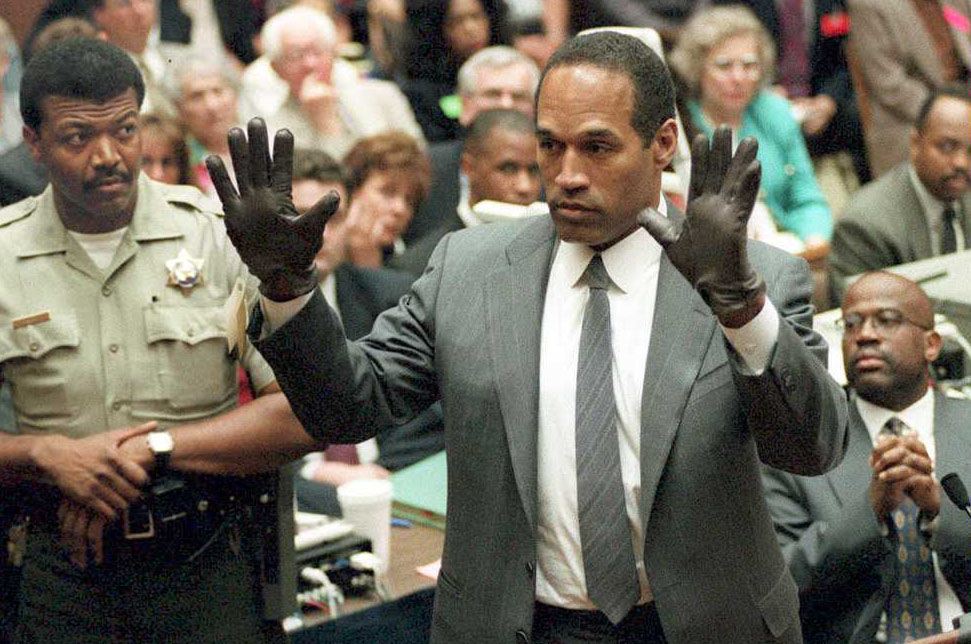Those over a certain age may already be intimately familiar with the infamous double murder trial that OJ Simpson faced back in 1995. In the decades since the trial has concluded, the case has all but eclipsed Simpson’s prolific careers as both a decorated running back for the NFL and as a comedic film actor. He famously beat the trial by jury, leading to one of the most shocking legal upsets the general public had ever seen. Though there was a mountain of DNA evidence to suggest that OJ was guilty of murdering his ex-wife Nicole Brown Simpson and her close friend Ron Goldman, the Heisman Trophy winner managed to escape a conviction with his dream team of high-profile lawyers and legal advisors.
The OJ Simpson trial has been explored in and out numerous times, though the Netflix original documentary American Manhunt: OJ Simpson has sparked a renewed interest in the landmark case. This four-part series is especially interesting because it’s the first major deep dive into the case since the disgraced football legend passed away in April 2024. To garner a full understanding of just how much evidence the LAPD had collected against Simpson, let’s briefly run through the facts of the double homicide trial, the information collected in American Manhunt, and OJ’s shocking acquittal. As you can expect, the following write-up will contain some disturbing material, so please read ahead using your own discretion.
Initial Evidence Implicating OJ Simpson
If you’ve spent any time tuning into coverage of the harrowing homicides of Nicole Brown Simpson and Ron Goldman, you already know that their demise came at the hands of a brutal stabbing. The murders left trace amounts of blood all over Nicole’s Southern California home, culminating in over 100 exhibits of DNA forensic evidence submitted to the court. Of this evidence, 61 drops of blood were presented at trial, seemingly confirming that OJ Simpson was present as the slayings took place. Furthermore, there were numerous bloody footprints leading outside of the house, which seemed to match OJ’s shoes and shoe size. Perhaps most famously, a bloody Aris Light glove was recovered at the scene, which prosecutors claimed to belong to the accused killer. Indeed, Nicole had purchased a pair of Aris Light gloves for her then-husband back in 1990, which the football star routinely wore while golfing.
Further investigation found the matching glove not far from the home, as well as a bloody sock in OJ’s personal residence. Cotton fibers recovered from the gloves matched those present in Simpson’s personal vehicle, and police even located bloody handprints along Simpson’s rear gate at his home. A cursory look at the late star’s driveway also saw blood from the crime scene present outside his abode. In the brief period between the initial discovery of the murder scene and OJ’s arrest, he also purchased airline tickets, which prosecutors argued could have been a means to escape from justice. Obviously, there was a mountain of evidence suggesting his guilt, which made the court case all the more shocking as Simpson’s defense team raised reasonable doubt arguments over roughly eight months.
Unpacking OJ’s Legal Defense
During the 1995 trial, many Americans were extremely unaware of just how comprehensive DNA evidence had become in modern policing. While prosecutors argued that OJ Simpson’s blood was found all over the crime scene, many did not feel that the DNA evidence was strong enough to warrant a conviction. To make matters worse, the LAPD had mishandled tons of evidence from Nicole Brown Simpson’s home, including more than one liter of blood which was inexplicably removed from evidence and ultimately lost. OJ’s defense argued that the mishandling of the blood was indicative of an overall compromise in police evidence, rendering the entire forensic collection null and void. This was the first in a series of critical errors made by investigators, which ultimately led to OJ walking away scot-free.
In addition to the mishandled bloodwork, there were credible claims from the defense that the famously corrupt LAPD may have planted evidence, in an ultimately futile attempt to make their client appear guilty. The department failed to properly document and file paperwork regarding their collections at the crime scene, allowing OJ’s defense an opportunity to argue that his blood may have been planted there by investigating officer Mark Fuhrman. Fuhrman was a lynchpin in the trial, as he was accused of being outwardly racist, which the defense used to highlight that he may have had motivation to frame the football legend for the double homicide. When asked if he had planted evidence at the scene, falsified police records and intentionally set Simpson up for a faulty conviction, Fuhrman invoked his Fifth Amendment right against self-incrimination, which many saw as a tacit confession of guilt.
How the Former NFL Player Beat the Case
Shockingly, Fuhrman was the only individual involved in the OJ Simpson trial to actually see a guilty verdict. His use of racial epithets on tape led him to accept a plea bargain and plead no contest to charges of perjury. The disgraced detective was fined $200 and sentenced to three years of probation. Fuhrman’s conviction solidified the public perception that the LAPD relied on sweeping corruption to make OJ appear guilty, which allowed the defense to poke additional holes in the state’s case. An anticoagulant called ethylenediaminetetraacetic acid (or EDTA) was found in the LAPD’s bloodwork, confirming that Simpson’s blood, which was allegedly found at the scene, could actually have originated from a lab. This, combined with the LAPD’s sloppy documentation work, meant that the prosecution could not maintain Simpson’s guilt beyond a reasonable doubt.
This was all compounded by an ongoing social reckoning against the police, as this department in particular had numerous misconduct violations against Black Americans in the years leading up to the trial. The most high-profile incident at the time was the vicious beating of Rodney King, which helped to ignite a generation of social justice seekers to protest against police brutality. OJ’s trial largely served as a reaction to the Rodney King incident, as a large number of black Americans rallied behind the NFL MVP on the grounds that he was being made an example of by those in charge of the police force. Whether you believe that OJ was guilty or not, it cannot be denied that the Rodney King beating and subsequent political fallout helped to soften the image of a Black man being targeted by the police, especially when some amount of evidence had clearly been planted.
What Did We Learn From ‘American Manhunt’?
Though most of American Manhunt outlines the same information we’ve known for decades, the docu-series does contain a few key pieces of information regarding the OJ Simpson trial. It reveals that multiple jurors have gone on to question their decision not to convict OJ, with some firmly saying they would vote guilty if they could go back in time. This likely wouldn’t have changed the outcome of the trial anyway, seeing as the football star was found innocent via unanimous decision. The largest piece of new information comes from Mark Fuhrman himself, who agreed to sit down with director Floyd Russ to reminisce on his time on the stand. Today, Fuhrman firmly claims that he never planted any evidence – no Fifth Amendment invocation required. Unfortunately, it’s too little too late for Fuhrman to reclaim his image, and his claim likely won’t change any hearts or minds in 2025.
Unlike the wealth of other OJ Simpson documentaries and dramatizations, American Manhunt has the luxury of examining Simpson’s life in the wake of his passing. Russ manages to tell a story within the documentary about OJ’s final days, including some of the things the notable running back discussed with his children and close advisors while on his deathbed. In the end, Simpson was never convicted on murder charges, though he was found liable for the wrongful deaths of both victims in a civil suit. Apparently, OJ went to his grave demanding that Goldman’s family not receive any more of his money after his passing, as a final act of disrespect to his perpetually grieving rivals. One particularly poignant moment in American Manhunt sees Floyd Russ remarking, “If you remember he said he was fine,” referencing Simpson’s comments about his own health days before his passing. “So I always joke that he lied to us until the day he died, basically.”

